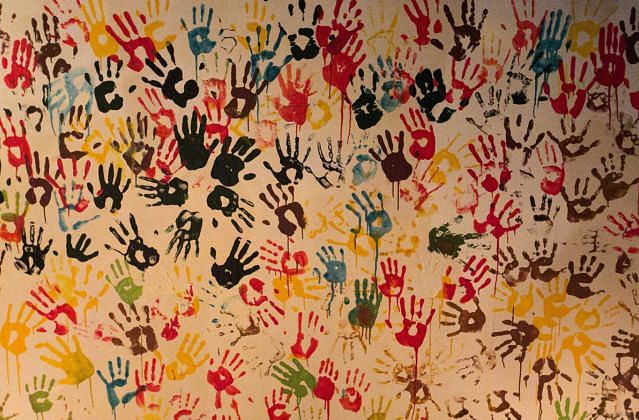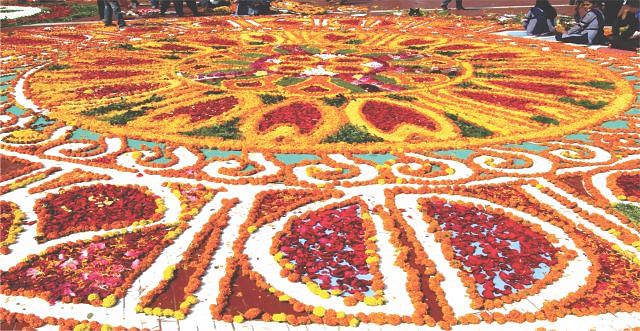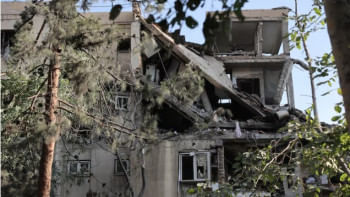Bangladesh: A Repository of Cultural Diversity
As we proceed, Bangladesh is known to be a homogeneous country. But at the same time it has been a storehouse of diverse culture. We laid down our lives for our mother tongue in 1952, fought a war in 1971, when our homogeneous culture was threatened by an alien power, who tried to impose its illogical wishes on our cultural fabric. At the same time, we fought a war also to ward off attack on its diversity. We know how the Pakistani colonialists wanted to take out a large portion of Nazrul's creations like 'Shyama Sangeet' from his rich repertoire and tried to ban Rabindranath on the pretext that he was not a Muslim. At this juncture, as a curtain raiser, it might be logical to define culture as enunciated in the book of anthropology:
A) Culture is: “the total of inherited ideas, belief, values and knowledge, which constitute the shared-bases of social action.”
B) Culture is: “the total range of activities and ideas of a group of people with shared traditions, which are transmitted and reinforced by members of that group.”
C) Culture is: “the artistic and social pursuits, expressions and taste valued by a society or class as in arts, manners, dress, etc.”
Now that we have defined culture, we would like to take a closer look at the meaning of cultural diversity. Its description, as given by anthropologists, is:
“Cultural diversity is based on the idea that cultural identities of each component of a given population should get equal importance to give a diverse and colourful cultural fabric to a nation.” But the fact also remains that if anyone were to look closely at Bangladesh, they might overlook the aspect of diversity because of the following statistics. The country has 80% alluvial plain land lying at an average elevation of less than 10 metres above sea level and therefore the landscape may seem to lack diversity. Ninety-eight percent of the people speak Bangla, so linguistically they are very homogeneous as well. The vast majority of the population of at least 89% is Muslims and most of its inhabitants come from an Aryan-Mongoloid-Dravidian mix. Therefore, the homogeneity of Bangladeshi people is further fortified. But let us now consider all the little nuances that make for an interesting mosaic of diversity within this apparently homogeneous land, which serves as a great melting pot of tolerance, understanding and heritage. Geographically speaking, Bangladesh is divided in distinct cultural diversity areas. The northern plains, its old capital of Mahasthan, had always been the gateway to Bangladesh. The southern region and its old capital, Bagerhat, preserve unity in its forests and jungles. The eastern region and its old capital, Chittagong, hosted the hill people and their cultural uniqueness. While the central region and its old capital, Sonargaon, served as the meeting point for traders and merchants coming from as far East as China and as far West as Rome.
The factors of social unity through diversity are multifarious.
A)Bangladesh is a home to all four major religions and quite a few sects and faiths within or outside those religions that are unique. Hence we see that from time immemorial until such time as the British colonialists introduced the political weapon of divide and rule, the Hindus, Muslims, Buddhists, Christians and many other religious minorities lived in an enviable abode of peace and harmony.
B)In sartorial matters there has always been a similarity amongst people belonging to various faiths, casts, creed or colour. However, Bangladeshis have accepted a variety of designs and patterns as also fabrics that have been brought by the rank outsiders to this country. They have adapted these imported clothes to suit their own taste and requirement.
C)In matters of food, there has been very little difference and the Bangladeshi palette, across the board, would relish in gay abandon the goodness of fish curry and plain boiled rice. That said the Bangalis are known to experiment with a variety of culinary delight coming from the west or the east.
D)In matters of sports and games, Bangladesh has indigenous and localised events that have been popular through the length and breadth of this nation. Kabadi, ha-du-du, dariyabandha, Gollachhut, Boat racing, Bullock Cart Racing, Kite Flying et al. have always been favourite sporting past-time amongst the Bangladeshis. With the emergence to modern time our young people have enthusiastically taken to diverse international games like football, volleyball, basketball, hockey or cricket. Indeed, in cricket we are now a force to reckon with. A great breakthrough has been made by our women in taking active part in many of these sporting events and competing at the international levels.
E)Now comes the subject of practising art form, which has become very vibrant in Bangladesh since its birth and in which I had the rare privilege to have a direct role to play. First of all, the cultural activists in Bangladesh firmly believe that Bangladesh has equal legacy to the sub-continental culture that has developed over thousands of years. And this belief in itself has brought about and cemented an understanding between cultures that were homegrown and those that came from the next door neighbours. Beyond the neighbours we can see in our cultural practices a great influence of the culture of the west, which has fusioned into a popular and vibrant new form and have become a part of our cultural mix.
F)Our painters have always drawn inspiration from major international trends of classical and modern art and freely used the forms in depicting the local content that they have been inspired by. Therefore, it will never be difficult for an onlooker to understand the locale and the narrative in a painting that has been drawn following the Dada, Surreal, Cubist, expressionist or even post modernistic forms. This, however, does not preclude totally indigenous form and content of art by various stalwarts of our country.
G)Our works of literature have again assimilated diverse thoughts and philosophies in expressing their own anguish or happiness. And these have been done through various forms ranging from naturalism and realism to abstraction and even absurdity. These influences come from indigenous sources as also beyond boundaries.
H)Let us now move towards music. In this category, perhaps, diversity has come to a greater extent both in form and content through the windows that we have opened up to world culture from the day of our independence. It is not rare to be able to see rendition of a variety of Indian Classical dance or listen to the sub-continental music. And these are exceedingly popular amongst the Bangladeshi music and dance lovers. Add to it, the infusion of modern or semi-classical western music like Jazz, Blues etc.
I)The film scenario in Bangladesh is still at a nascent stage. Our commercial films are nothing much to write home about. But since the independence of the country the younger film enthusiasts through the film society movement and later, short and full length film making movement tried to make decent and artistic films for an otherwise hungry audience. This has now assumed the character of what is known as parallel cinema. We all know that film is a very modern form of expression and owes its origin to the west. Therefore, the form used essentially has come from its place of origin beyond our boundaries. We all know that even Satyajit Ray, in his immortal role as a filmmaker, was inspired by Bi-cycle Thief by De-Sica and River by Jean Renoir. This blend of an ostensibly foreign medium with local content and indigenous philosophy brought about a diversity that is already making waves in the international circuit.
J)With the independence of Bangladesh, the most vibrant scene was observed in the field of stage theatre. In fact, this art form has been marking time during the entire period of colonisation of East Bengal by the Pakistanis. Immediately after independence, some young people up to the brim with enthusiasm and reverberating with the spirit of freedom came forward with newer ideas of stage plays. This gave birth to the concept of intermittent staging of plays which a theatre enthusiast could see given any evening of the week. This essentially was urban theatre, and, again, played the key role in importing diversity on our stage. Just as we saw original Bangladeshi plays being performed, the viewers here were also entertained by classics of Sophocles, Shakespeare, Mollier, Ibsen, Chekov, Zuckmayer, O'Neil, and modern playwrights like Becket, Albee, Bond, Osborne, et al. We have also seen successful adaptation of plays by famous Indian playwrights being staged in Dhaka. Some of the plays emanating from the classic Indian Mythology have had very successful staging in Bangla on a regular basis. This element of diversity in theatre got a tailwind with some of the foreign agencies taking active interest in theatre training and education. Worth-mentioning amongst these are the scholarships offered by the Indian government for theatre and film education in Delhi and Pune. This was followed by an active interest of the British Council in bringing over theatre experts and directors to conduct workshops and direct classical Shakespearian plays in Bangla. This collaboration and a similar programme undertaken by the American Center happened in the 1970s. We have also had the formation of a very active centre of the International Theatre Institute in Bangladesh, the President of Bangladesh ITI has gone on to become the Chief of world ITI. This facilitated many exchanges between Bangladeshi theatre practitioners and those of various world theatre centres. It also harnessed diversity in this field of performing art.

K)So far, I have generally talked about the diversity in culture as triggered by external contribution. I would now like to turn towards the diversity that exists in our culture from within. Bangladesh is not a very big country, area wise. But if we scrutinise closely we will see that this land embellishes millions of different cultural shades among people across the nation. It is indeed surprising to note that each district of our country has its own dialect. Where each dictionary word is pronounced in an entirely different way. Therefore, Bhawaiya of the North and Bhatiyali of the South are two different genre of music that coexists famously here. Similarly, the Baul songs of Lalon Shai coming from Centre-west of Bangladesh travel the entire nation with alacrity mingling with many forms of popular folk music. Jatra is one of the oldest forms of dramatic art that ruled over our part of the world and is still very popular in both urban and rural Bangladesh. Narrative medium like Jari, Shari, Puthi Path and Kobi gaan add to the diversity in that, that each one of these has its own dugout all over rural Bangladesh. A point that merits mention here is the fact that though we have in our urban performances drawn inspiration from the world culture, the content remained very indigenous. This exercise also contributed to the element of diversity in our culture.
In conclusion of this brief review of the cultural scenario of Bangladesh, we would be able to comprehend that the land is full of diverse artistic practices both in form and in content. This tiny land with ever so enthusiastic population is eager to assimilate culture of the world that they are exposed to and in combination with their home grown artistic expression present to the world a new wave of culture-fest for understanding and absorption. As our great poet Rabindranath Tagore had said, “েদেব আর েনেব, েমলােব েমিলিব”. Translated into English, it would sound like, “thou shalt give and thou shalt receive” for the greater glory of humankind.
Aly Zaker is a noted cultural personality.


 For all latest news, follow The Daily Star's Google News channel.
For all latest news, follow The Daily Star's Google News channel. 



Comments